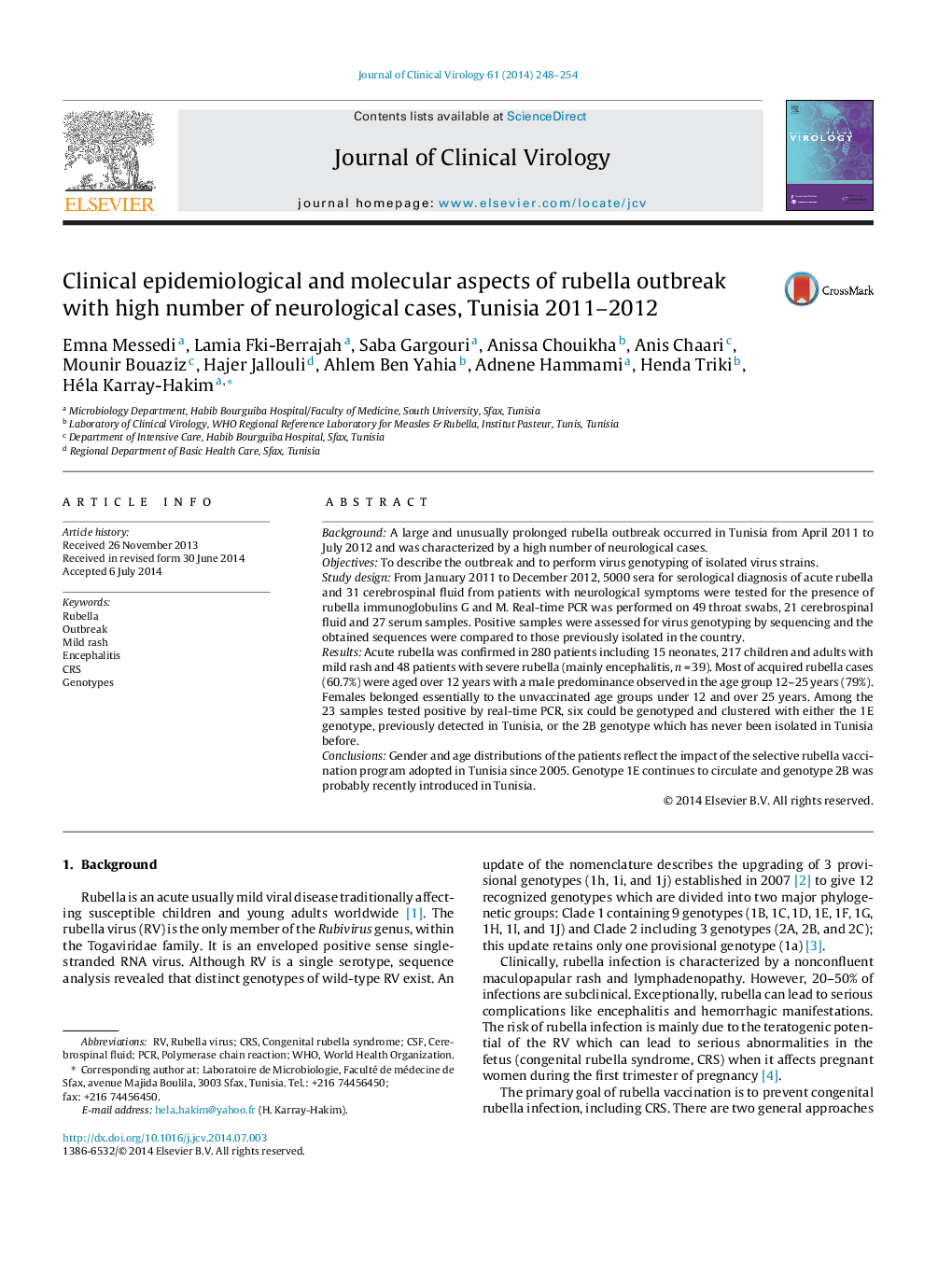| کد مقاله | کد نشریه | سال انتشار | مقاله انگلیسی | نسخه تمام متن |
|---|---|---|---|---|
| 3368910 | 1218984 | 2014 | 7 صفحه PDF | دانلود رایگان |
• We describe clinical and molecular features of rubella outbreak in Tunisia.
• Outbreak was characterized by neurological cases and congenital rubella syndrome.
• Gender and age groups of patients reflect the impact of our vaccination strategy.
• 2B genotype was detected for the first time besides the usual genotype 1E.
BackgroundA large and unusually prolonged rubella outbreak occurred in Tunisia from April 2011 to July 2012 and was characterized by a high number of neurological cases.ObjectivesTo describe the outbreak and to perform virus genotyping of isolated virus strains.Study designFrom January 2011 to December 2012, 5000 sera for serological diagnosis of acute rubella and 31 cerebrospinal fluid from patients with neurological symptoms were tested for the presence of rubella immunoglobulins G and M. Real-time PCR was performed on 49 throat swabs, 21 cerebrospinal fluid and 27 serum samples. Positive samples were assessed for virus genotyping by sequencing and the obtained sequences were compared to those previously isolated in the country.ResultsAcute rubella was confirmed in 280 patients including 15 neonates, 217 children and adults with mild rash and 48 patients with severe rubella (mainly encephalitis, n = 39). Most of acquired rubella cases (60.7%) were aged over 12 years with a male predominance observed in the age group 12–25 years (79%). Females belonged essentially to the unvaccinated age groups under 12 and over 25 years. Among the 23 samples tested positive by real-time PCR, six could be genotyped and clustered with either the 1E genotype, previously detected in Tunisia, or the 2B genotype which has never been isolated in Tunisia before.ConclusionsGender and age distributions of the patients reflect the impact of the selective rubella vaccination program adopted in Tunisia since 2005. Genotype 1E continues to circulate and genotype 2B was probably recently introduced in Tunisia.
Journal: Journal of Clinical Virology - Volume 61, Issue 2, October 2014, Pages 248–254
